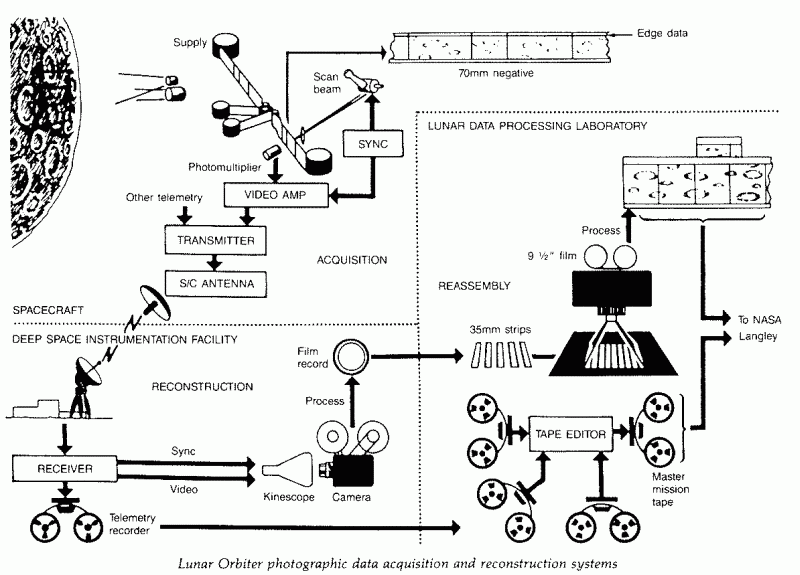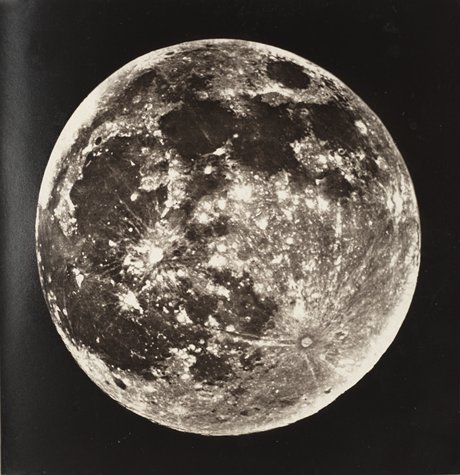Spinoffs
This is how the moon looked like in 1885 when James Hall Nasmyth and James Carpenter educated their eye with the help of a telescope “not only in respect to comprehending the general character of the moon’s surface, but also to examining minutely its marvellous details under every variety of phase, in the hope of rightly understanding their true nature, as well as the causes which had produced them.” This and more on the cosmical origin of the planets of the solar system, on existence and non-existence of a lunar atmosphere can be read in their wonderful book “The moon considered as a planet, a world, and a satellite”
More education for the eyes was done in 1966 by the Five ‘Lunar Orbiter’ missions. With the help of these tools:

within a few days 99% of the Moon was photographed with a resolution of 60 m or better:

and within 3 weeks they were transmitted to Earth as analog data after onboard scanning of the original film into a series of strips. The data were written to magnetic tape and also to film.
In 2007, with the help of the Lunar Orbiter Image Recovery Project (LOIRP) began a process to convert the Lunar Orbiter Images directly from the original Ampex FR-900 analog video recordings of the spacecraft data to digital image format, a change which provided vastly improved resolution over the original images released in the 1960s. Due to the state of the art marvellous details of the moon currently looking like this:

highest resolution is availiable here

8-bit version of Pink Floyd’s Dark Side of the Moon: http://rainwarrior.thenoos.net/music/moon8.html
“Beyond: Visions of Our Solar System,”
http://www.nytimes.com/2010/07/29/arts/design/29museum.html